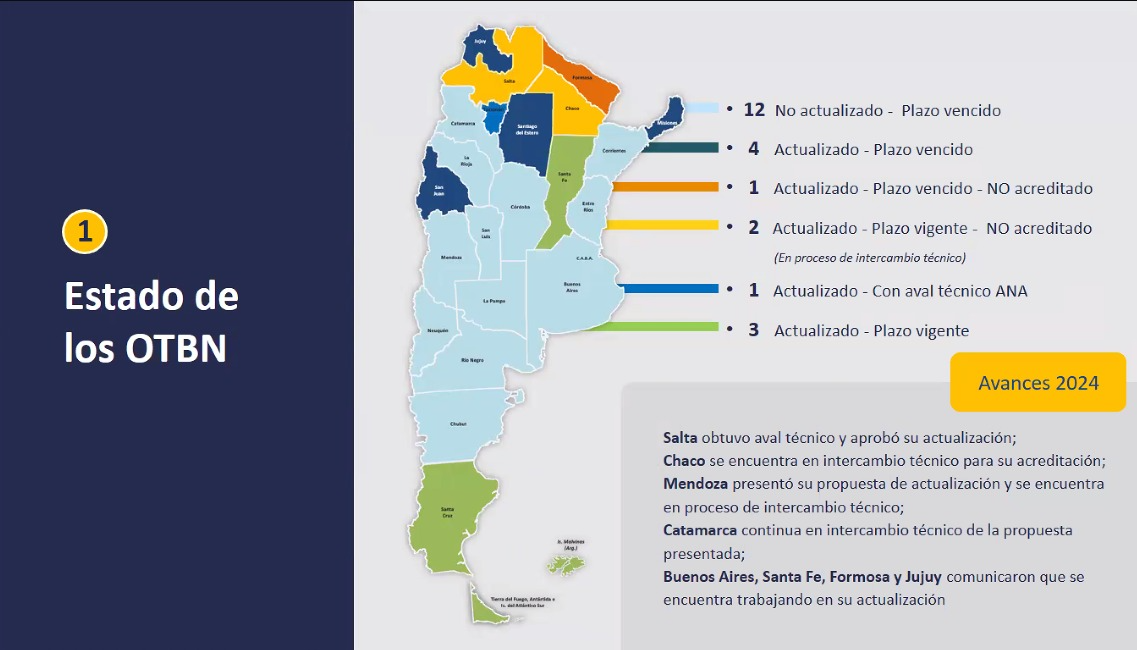24.1
Published onIn Argentina, native forests are classified into three conservation categories—I (red), II (yellow), and III (green)—under Law No. 26,331 and corresponding provincial regulations. Category I represents areas of very high conservation value that must not be converted; Category II allows limited uses such as sustainable tourism and harvesting; and Category III permits partial or total conversion, always within the law’s criteria. This classification enables territorial planning policies by defining the activities allowed in each zone. Every province must carry out a Native Forest Territorial Zoning (OTBN) based on Environmental Sustainability Criteria (CSA).

Source: National Undersecretariat for Environment.
Funding
From the quantitative information available, we compiled the statistical data published by the Environmental Information Center (CIAM) under the Secretariat for Environment, which indicates there are 47 million hectares of declared native forest, compared with 53 million previously declared according to the 2023 implementation report on Law 26,331. CIAM provides a report measuring hectares by affected forest categories, but it is updated only through 2020. That report shows that, up to that date, Categories I and II lost a combined 111,935 hectares across several provinces. The provinces with the greatest losses were Chubut, Córdoba, Entre Ríos, La Rioja, Río Negro, San Luis, and Santiago del Estero.
Because this source does not report a time series explicitly labeled as “deforestation,” we use the number of hectares of native forest by category as a proxy indicator, noting that this metric also captures forest loss from other causes (e.g., wildfires).

